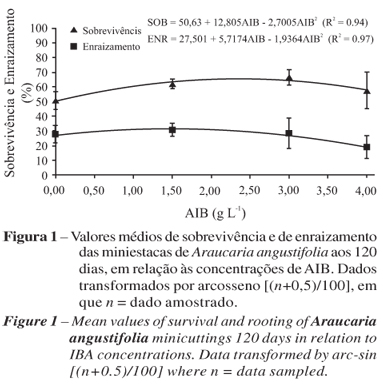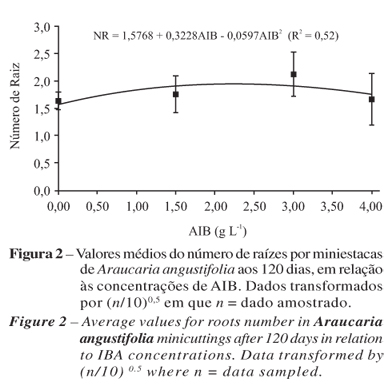Considering the limitations of vegetative propagation of Araucaria angustifolia and the total absence of information regarding the minicuttings technique in this species, this study aimed to evaluate the influence of concentrations of indolbutyric acid (IBA) in minicuttings technique of Araucaria angustifolia, as well as the characterization of growth habit (orthotropic or plagiotropic) of the minicuttings produced. The Minigarden comprised ministumps propagated by seeds. The basal region of minicuttings was exposed during 10s in solutions containing concentrations 0, 1.5, 3.0 and 4.0 gL-1 IBA after what they were transferred to a greenhouse for 120 days. The design was completely randomized with five replications of 15 minicuttings. Increasing IBA concentrations favored a little increase in survival (up to 3.0 gL-1), number of roots of minicuttings (estimate up to 2.3 gL-1) and rooting (up to 1.5 gL-1), causing inhibition at the highest concentration, however the low 32% best rooting result obtained. According to the results there is a need to develop more studies on the specie, especially when considering the nutritional and environmental propagation. The growing habit of all rooted minicuttings was orthotropic, showing the potential of the technique in cloning selected families of the species.
Cloning; Conifer; Growing habit




